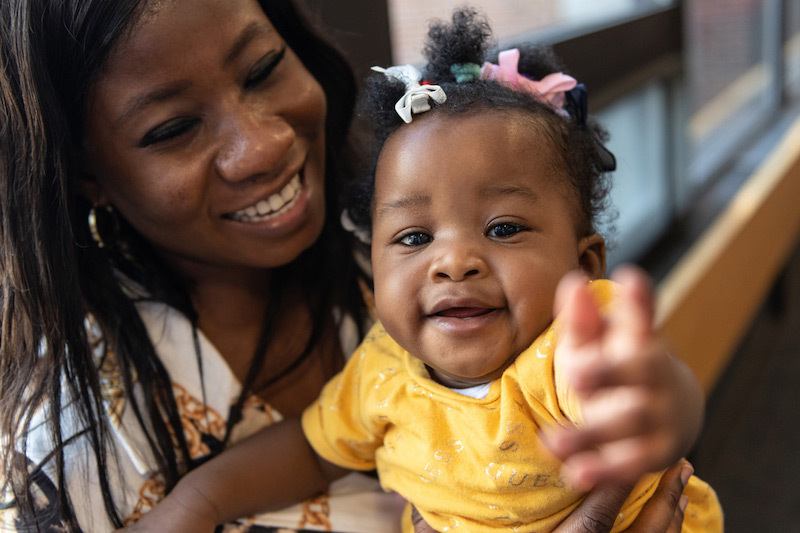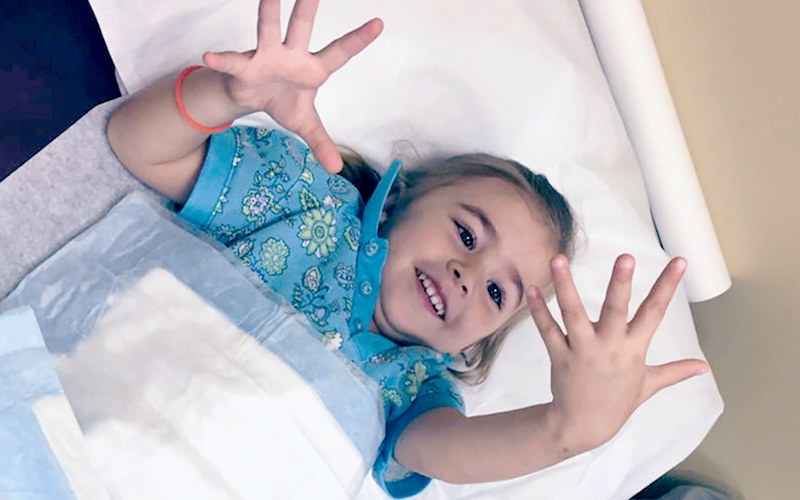Breadcrumb
- Home
- Programs & Services
- Limb Lengthening Reconstruction
Expert care for complex limb deformities or limb-length discrepancies
The Limb Lengthening and Reconstruction Program at Boston Children’s Hospital uses advanced techniques to care for patients with complex limb differences. We provide comprehensive care for children and young adults with arm or leg differences that are present at birth as well as those caused by trauma, bone infection, or developmental deformity.
Our team of specialists have deep expertise in limb lengthening and reconstruction procedures for both the lower and upper extremities. However, we also understand that these are challenging procedures with inherent risks. We therefore take a thoughtful approach to ensuring our patients and their families fully understand all their options so they can choose a treatment that’s right for them.
We also understand childhood growing patterns and how to tailor treatments so our patients can achieve maximum limb function throughout their lifetimes. In many cases, we remain involved in our patients’ care from early childhood through early adulthood.

A heavy-medaled gymnast and his close call with leg-length discrepancy
Ask 15-year-old Kaleb what he likes about gymnastics and with a sly smile, he’ll say, “flipping around.” That’s Kaleb: understated, funny. But watch him in action, and you’ll see a focused gymnast…

One family, two very different clubfoot experiences
Theresah Boateng and her daughter Eno Agyapomaa Agyemang both have strong wills and outgoing personalities. Both were born with a foot deformity called clubfoot, and both received treatment at Boston…

Fingers, shoulders, and everything in between: Three upper extremity surgeons and their relentless quest for solutions
It’s 6 a.m. and the surgeons in the Hand and Orthopedic Upper Extremity Program at Boston Children’s Hospital have logged on for their weekly meeting. “We meet first thing every Monday to discuss our…
Why choose the Limb Lengthening and Reconstruction Program at Boston Children’s Hospital?
We offer a full spectrum of surgical and nonsurgical treatment options for limb differences related to:
- Leg-length and arm-length discrepancies
- Congenital (present at birth) conditions, such as fibula hemimelia and congenital short femur
- Bone dysplasias, such as achondroplasia and skeletal dysplasia
- Developmental conditions such as Blount’s disease and Madelung’s deformity
- Trauma, complex fractures, and bone infections
- Bone tumors and bone cysts
Limb differences often stem from complex conditions or injuries that require numerous medical specialties. Boston Children’s is home to a broad range of centers of excellence. We collaborate regularly with our colleagues in oncology, neurology, vascular anomalies, plastic surgery, bone and soft tissue tumors, and many other specialties to provide each individual patient the full range of care they need.
Prenatal counseling for congenital limb differences
When a congenital limb difference is detected during a routine prenatal ultrasound screening, we work with Boston Children’s Fetal Care and Surgery Center to help expecting parents understand their baby’s condition and options for treatment. While treatment typically begins after the child is born, meeting with us before then gives parents a chance to plan ahead and develop relationships with the team that will be involved in their child’s care.
Individualized approach to limb differences
We can, and do, let patients know what treatments may work from a medical standpoint. We also encourage patients and families to consider their goals and values as they weigh the risks and benefits of each option.
While many of our patients choose limb lengthening or reconstruction, some choose amputation based on the mobility they can achieve with fewer surgeries through that method. Our patients teach us, time and time again, how important it is for each individual patient or family to choose a treatment that works best for them.
Limb lengthening and reconstruction treatments
Limb reconstruction may involve replacing missing bone, lengthening a shorter bone, or straightening misaligned sections of bone.
Choosing the best treatment option is a matter of taking the patient’s age, condition, and life circumstances into account. We consult with our patients, their families, and any other specialists involved in their care to develop a treatment plan for each individual patient.
Some of the treatments we perform include:
- Arm and leg lengthening lengthens bones affected by congenital differences, infection, bone tumors, or trauma. There are a number of methods available. External fixators have been used for many years to lengthen the long bones of the legs and arms. A newer innovation uses an internal device to lengthen the shin bone, thigh bone, or upper arm bone from the inside.
- Epiphysiodesis can correct a smaller difference in limb length by removing cartilage from the growth plate of the longer limb in order to slow growth.
- Hemiepiphysiodesis uses guided growth to cause a crooked bone to grow straight over time.
- Ilizarov method is used to correct complex fractures, fracture malunions and nonunions, chronic bone infection, segmental defects, and bone deformities. A device on the outside of the leg holds bony segments in place while the bone heals.
- Limb-salvage surgery replaces bone that is missing or malformed due to trauma or infection with advanced bone graft, bone transport techniques, or an implanted prosthesis.
- Rotationplasty removes and then reattaches the lower leg so the calf becomes the thigh and the ankle serves as the knee. While this treatment is primarily used for patients with bone cancer, it is also an option for some children patients born with bone deformities.
Advanced imaging technologies
We work closely with the Department of Radiology, which offers a wide range of advanced diagnostic imaging and image analysis. We have onsite digital radiology, CT, and MRI scanning with the ability for same-day scans.
Among the imaging innovations available at Boston Children’s is EOS imaging, a three-dimensional system that produces high-quality images with less exposure to radiation. The EOS system produces images of large sections of the body, for instance, from the hips to the ankles, providing important information for diagnosis and surgical planning.
We can also work with the Boston Children’s Simulator Program to create 3D models of patients’ bone structure. In some cases, the models provide a view of the patient’s unique anatomy ahead of surgery, enabling our surgeons to develop a detailed surgical plan before stepping into the operating room.
Innovative lengthening technologies
In recent years, new technologies have helped improve limb lengthening for many patients. Innovative technologies we offer include:
- Computer assisted lengthening and deformity correction combines computerized planning and a smartphone app to provide patients and family members detailed instructions on when and how to expand a hexapod frame worn on the outside of the limb.
- Intramedullary limb lengthening uses an internal device to lengthen long bones in the leg or upper arm. An expandable rod is surgically implanted inside the bone and the patient or a family member uses a remote controller to slowly expand the rod. While this method still requires months of lengthening and healing, it significantly reduces patients’ risk of infection.
- Patient-specific custom osteotomy guides use a CT scan to design and use precise technology for correction of complex deformities, particularly in the forearm.
Complex case: Humeral lengthening using a lower extremity device


